Best CSGO Upgrade Sites – Where to Safely Upgrade Skins?
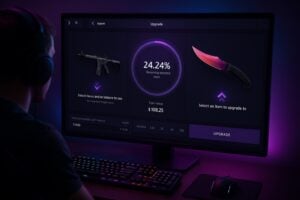
If you’ve been grinding cases and ended up with a pile of mid-tier skins you never use, CSGO upgrader games might be exactly what you’re looking for. These are essentially high-stakes trade-up systems where you risk your current skins for a shot at something way better – think of it as CSGO’s version of double or nothing, except you’re not just doubling your value.
The concept is straightforward but intense: you pick a target skin you want (maybe that Karambit you’ve been eyeing), throw in whatever items you’re willing to sacrifice, and the system calculates your odds based on the value gap between what you’re risking and what you’re chasing. Then comes the nerve-wracking part – watching that spin animation decide whether your collection of AK skins just became a butterfly knife or vanished into the digital void.
We’ve been testing CSGO upgrader sites across every major platform, putting our own inventories on the line to see which ones actually deliver. Here’s what we found: while the core gambling mechanics stay consistent, the user experience varies dramatically between sites.
The best platforms give you crystal-clear odds displays and smooth interfaces that make it easy to calculate risk versus reward. The sketchy ones bury crucial information behind flashy animations and confusing multiplier systems that make it nearly impossible to understand what you’re actually betting.
After weeks of testing with real skins and real money, SkinsLuck consistently stood out as the cleanest experience with the most transparent path to those high-tier items you’re actually trying to reach.
Top CSGO Skin Upgrade Sites We Actually Trust
We put each CSGO upgrader through the same test: deposit real skins, attempt multiple upgrades, and see which platforms actually deliver on their promises. The sites that made our list all nail the fundamentals – you can see your exact odds before committing, withdrawals happen fast when you hit something good, and the success rates feel legitimate instead of suspiciously stacked against you. Most importantly, the interface doesn’t leave you wondering if you accidentally bet your knife when you meant to risk a five-dollar skin.
1. SkinsLuck: The Upgrader That Actually Makes Sense
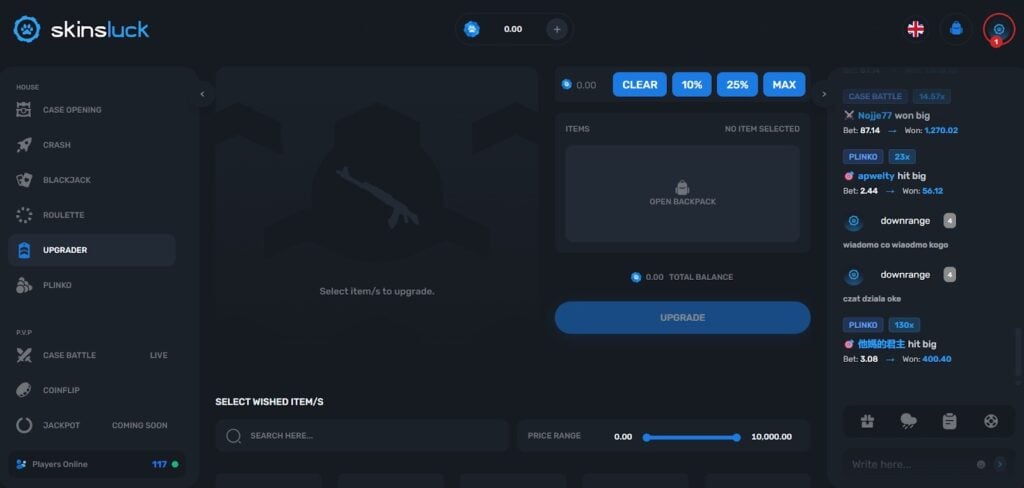
Right off the bat, SkinsLuck does what every CSGO upgrade site should: it shows you exactly what you’re risking and what your chances are before you commit. No hidden math, no confusing multipliers that require a calculator – just pick your target skin, select what you’re willing to risk, and see your odds displayed clearly. The interface feels properly designed, like they actually tested it with real players instead of just shipping whatever looked good in the mockups.
What makes this CSGO skin upgrade site genuinely different is the post-upgrade flow. You know that moment when you hit a big upgrade and suddenly the site gets mysteriously slow? Yeah, that doesn’t happen here. We’re talking actual instant – not “instant” that means waiting three hours for a trade bot.
The upgrader also connects seamlessly with their other modes, so you can bounce between cases, battles, and upgrading without feeling like you’re navigating three different websites.
The filtering deserves a mention because it’s surprisingly good. Want to target specific knife patterns? Filter by collection. Looking for StatTrak items only? Two clicks and you’re there. After testing sites that make you scroll through pages of random skins to find what you want, SkinsLuck feels like it actually values your time. Small details, but they add up to a much better experience overall.
Pros
- Crystal-clear odds display with no hidden calculations
- Genuinely instant withdrawals (we tested multiple times)
- Smart filtering system for targeting specific skins
- Smooth integration with other game modes
Cons
- Newer platform with smaller community than veterans
- Limited promotional events compared to bonus-heavy sites
2. Skin.Club: The Community-Driven Upgrader
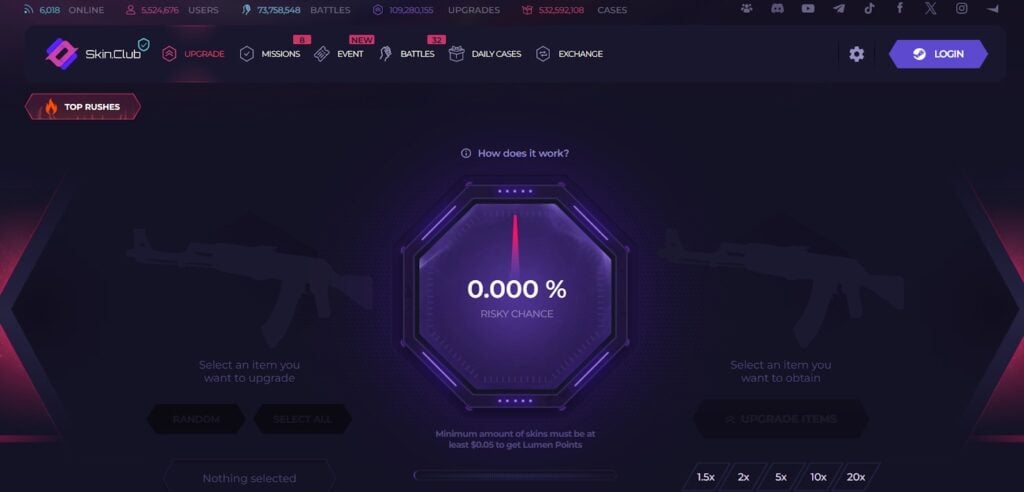
Skin.Club takes a different approach with their upgrader, adding community elements that make it feel less isolated than just you versus the algorithm. The upgrade streaks leaderboard shows successful runs from other players, which is either motivating or soul-crushing, depending on your recent luck. But hey, at least you know real people are hitting those crazy upgrades.
The main issue compared to other CSGO upgrade sites is withdrawal consistency. During peak hours, you might be waiting longer than you’d like, and skin availability can be spotty. The core mechanics work fine, but the overall polish isn’t quite there. It feels like they built a good foundation, but haven’t really updated much since. Still functional, just not as smooth as newer platforms.
Pros
- Strong provably fair implementation with clear verification
- Upgrade streak leaderboard adds a competitive element
Cons
- Withdrawal delays reported during peak times
- Interface feels dated compared to modern alternatives
3. Hellcase: The Multi-Game Flexibility King
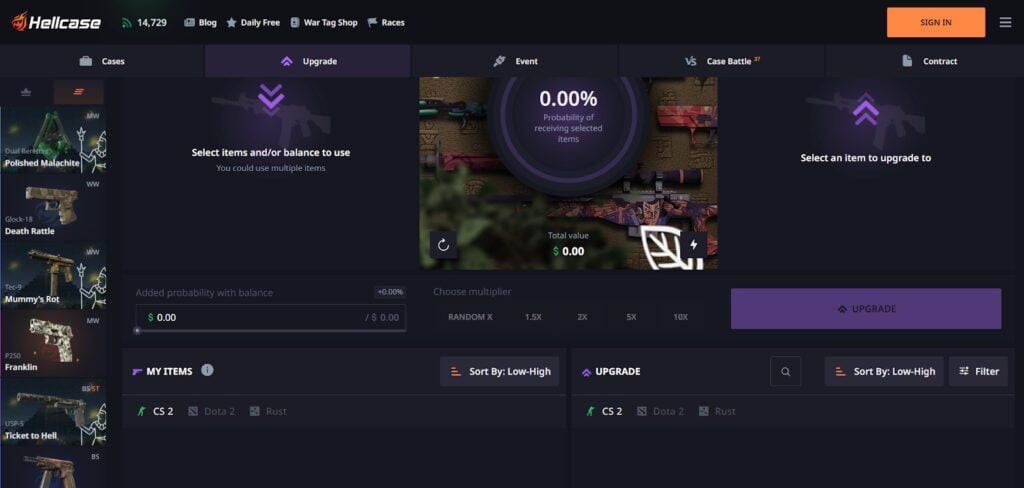
Hellcase caught our attention with cross-game upgrading – you can actually turn CSGO skins into Dota 2 items and vice versa. If you’ve got random Dota drops collecting dust in your inventory, this finally gives them a purpose. The multiplier system is solid too, letting you play it safe with x1.5 attempts or go for broke with x10 shots when you’re feeling confident about your luck.
Where Hellcase stumbles is their pricing system. We caught several instances where their valuations were way off from actual market prices – sometimes by pretty significant amounts. This makes it a pain to calculate whether an upgrade path is actually worth attempting, especially when you’re trying to figure out if you’re getting fair odds or getting played.
Pros
- Cross-game upgrading between CS and Dota 2
- Multiple multiplier options for risk management
Cons
- Questionable skin valuations don’t match market
- Interface can get cluttered with promotions
4. Clash.gg: The Balance-Based Alternative
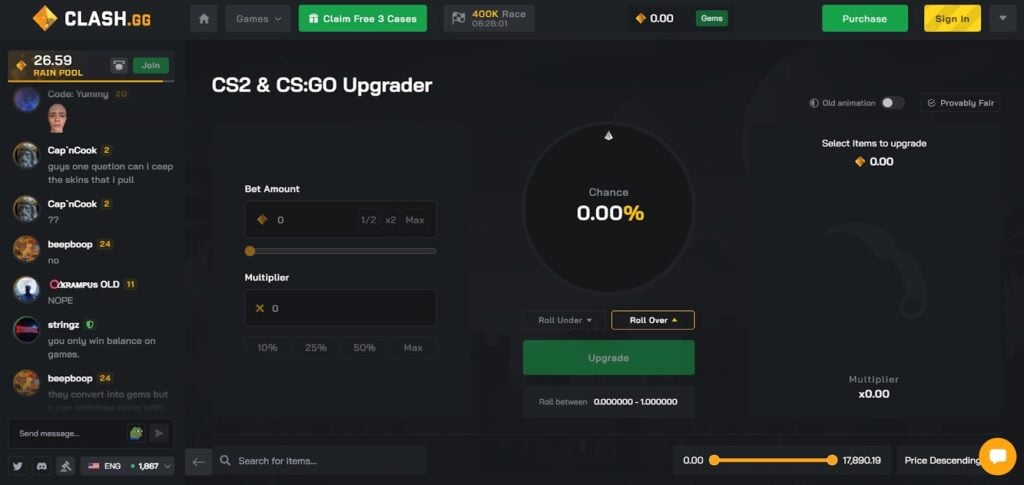
Clash.gg runs everything through their gem balance system instead of direct skin trades. You deposit skins, get gems, then use those gems for upgrading. Some players prefer this system, others find it unnecessarily complicated. After spending time with it, we can see both sides – it’s consistent once you understand it, but adds extra steps to what should be simple.
The good news is their rakeback system applies to upgrader losses too, so you’re getting a tiny percentage back even when things go south. What holds it back from being a top CSGO upgrade site is the withdrawal process.
Instead of instant bot trades, you’re dealing with API keys and waiting for confirmations. The gem system also means you can’t always withdraw the exact skin you won – you get the value and have to find something comparable in their cashout store.
Pros
- Rakeback on all upgrades softens losses
- Strong provably fair implementation
Cons
- Gem system adds unnecessary complexity
- Withdrawal process more complicated than competitors
5. Key-Drop: The Safety Net Upgrader
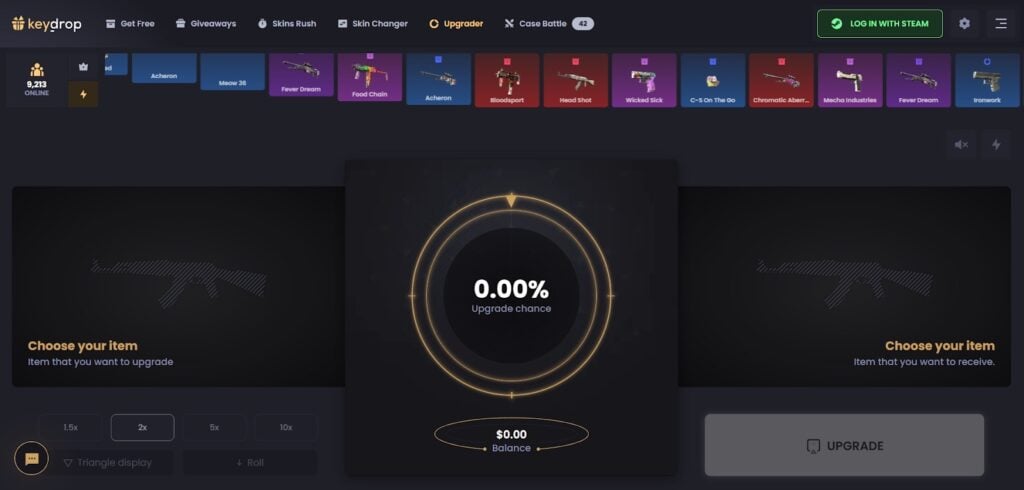
Key-Drop’s unique angle is their cashback system. When you fail an upgrade, you get either a random skin or a voucher instead of nothing. The compensation is usually worth way less than what you risked, but it can make a difference. At the very least, you’re not staring at a completely empty result after a failed attempt.
This CSGO skin upgrade site hits a major limitation with its withdrawal system – CS skins only, no crypto or other payment options. Their inventory also tends to run thin during busy periods, so even when you hit a good upgrade, you might end up waiting to actually claim your winnings.
Support response times have been problematic, too, according to user feedback. When you’re dealing with valuable items, slow support becomes a real headache.
Pros
- Cashback system softens failed upgrades
- Clear percentage limits prevent extreme gambling
Cons
- CS skin withdrawals only
- Support can be slow to respond
How CSGO Skin Upgraders Actually Work?
Let’s cut through the marketing fluff and talk about what’s actually happening when you hit that upgrade button. Spoiler: it’s simpler than sites want you to think.
The Basic Math Behind Every Upgrade
Every CSGO upgrade system uses the same formula. Take your skin’s value, divide it by the target skin’s value, and that’s roughly your success chance. A $10 skin chasing a $100 knife? You’re looking at around ten percent odds. No magic, no special algorithms – just basic probability math.
What “Provably Fair” Actually Means?
Sites generate a random seed before your upgrade, show you its hash, then reveal the seed after. You can verify the result matched the original seed using any hash calculator. It’s basically the site proving they didn’t change the outcome after seeing your bet. Most players never check, but it’s there.
Reading Between the Marketing Lines
Every site claims they’re “the most fair” or have “the best odds,” but the math is identical across platforms. What actually varies is the user experience, withdrawal speed, and how transparent they are about the process. Focus on these practical differences, not the marketing promises about revolutionary fairness systems
Final Verdict on CSGO Upgrade Sites
Upgraders fill a specific niche in the CS skin ecosystem. They’re for when opening cases feels too random, but trading feels too slow. You get that immediate gambling hit with slightly more control over the outcome. The key is picking the right platform and understanding the game you’re playing.
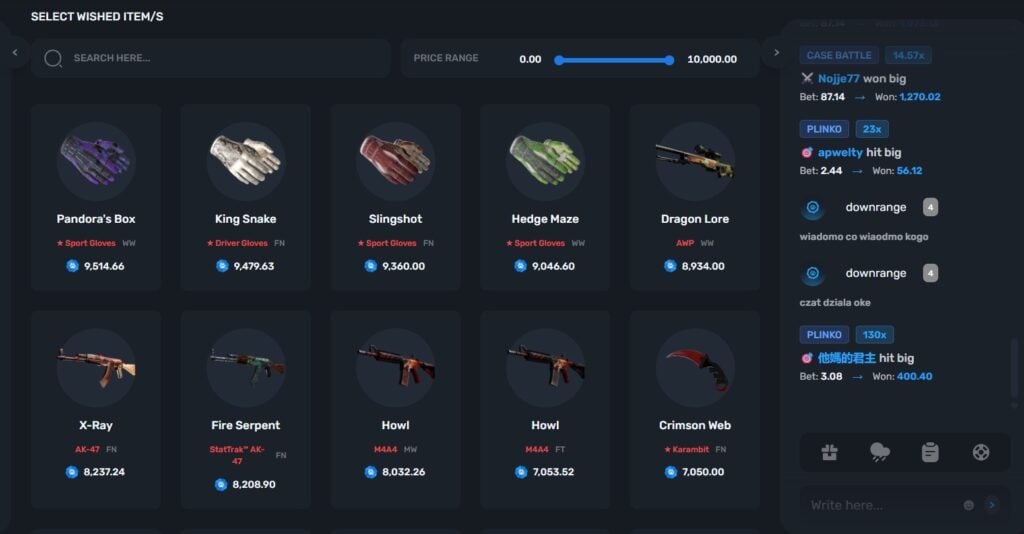
SkinsLuck stands out as the most polished option currently available, especially if you value transparency and speed. The other sites have their moments – Hellcase for cross-game flexibility, Skin.Club for community features, Clash.gg for the rakeback system, and Key-Drop for that safety net feeling. But for pure upgrading experience, we kept coming back to SkinsLuck.
Ready to turn those duplicate skins into something worth showing off? Try SkinsLuck’s upgrader today!
Frequently Asked Questions About CSGO Upgrade Sites
Can You Actually Profit From Upgraders Long-Term?
Mathematically, no. Upgraders have a house edge like any gambling game. You might hit lucky streaks or score big individual wins, but the math favors the platform over thousands of attempts. Successful players treat it as entertainment that sometimes pays out, not a money-making strategy.
What’s the Difference Between Upgraders and Trade-up Contracts?
Trade-up contracts are Valve’s official system requiring ten skins of the same quality to guarantee one skin from the next tier. Upgraders on third-party sites let you risk any skin for a chance at any other skin, with odds based on value difference. More flexibility, but also more risk.
How Do I Verify if an Upgrade Was Fair?
Legitimate sites show you a hash before each upgrade attempt. After the result, they provide the seed that created that hash. You can verify the hash matches the seed using online calculators. If a site doesn’t offer this or makes it complicated, that’s a red flag.
Why Do Some Sites Use Balance Instead of Direct Skin Trading?
Balance-based systems like Clash.gg’s gems simplify the backend but add complexity for users. Instead of managing thousands of skin trades, everything converts to currency. The downside is you can’t always withdraw the exact skin you wanted, just something of equivalent value.
Should I Use High or Low Multipliers When Upgrading?
Depends on your goal. Low multipliers (x1.5-x2) give better odds but smaller rewards – good for gradually building value. High multipliers (x5-x10) are lottery tickets with terrible odds but massive potential payouts. Most successful upgraders stick to the middle ground around x2-x3 for the best risk-reward balance.
This article has been provided by one of our commercial partners and does not reflect Cryptonomist’s opinion. Please be aware our commercial partners may use affiliate programs to generate revenues through the links on this article.
You May Also Like

Yarm Explained: Turning Trust and Tweets into Yield

A Hyperliquid whale's private key is suspected to have been stolen, resulting in losses exceeding $20 million.
